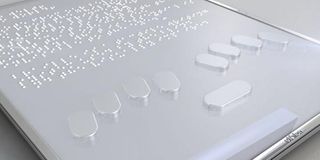A tablet that helps the blind to read

There are already applications for the special tablet that have already been able to garner several innovation and social impact awards.
What you need to know:
- To be sure, there are technological tools such as screen reading and enlargement programmes, electronic reading and input lines for Braille that translate electronic information into audible content.
- But apart from the high cost, these tools are awkward to use.
It was in the final year of her master’s studies at the University of Technology in Sofia that Kristina Tsvetanova was asked by a colleague whether she would be able to sign him up for an online course.
At first, she was a bit surprised by the request. Then she realised that the young man was blind.
“For the first time I understood how intensively we communicate and work with technologies to which certain groups of people like the blind have only limited access,” the 25-year-old business engineer said.
To be sure, there are technological tools such as screen reading and enlargement programmes, electronic reading and input lines for Braille that translate electronic information into audible content.
But apart from the high cost, these tools are awkward to use.
The encounter with a blind colleague was what prompted Tsvetanova to embark on what has proven to be a challenging project, namely, to develop a tablet for the blind and for persons with limited vision.
At the end of the year the main steps will be completed and the first prototype of the “Blitab” is to be presented.
There are already applications for the special tablet that have already been able to garner several innovation and social impact awards.
How does it work?
With a newly developed screen technology, smooth surfaces can be perceived tactilely.
Small physical cylinders emerge on the screen, similar to buttons or little bubbles that represent the specific digital content in Braille.
The process involves a Braille conversion software that is part of the device.




